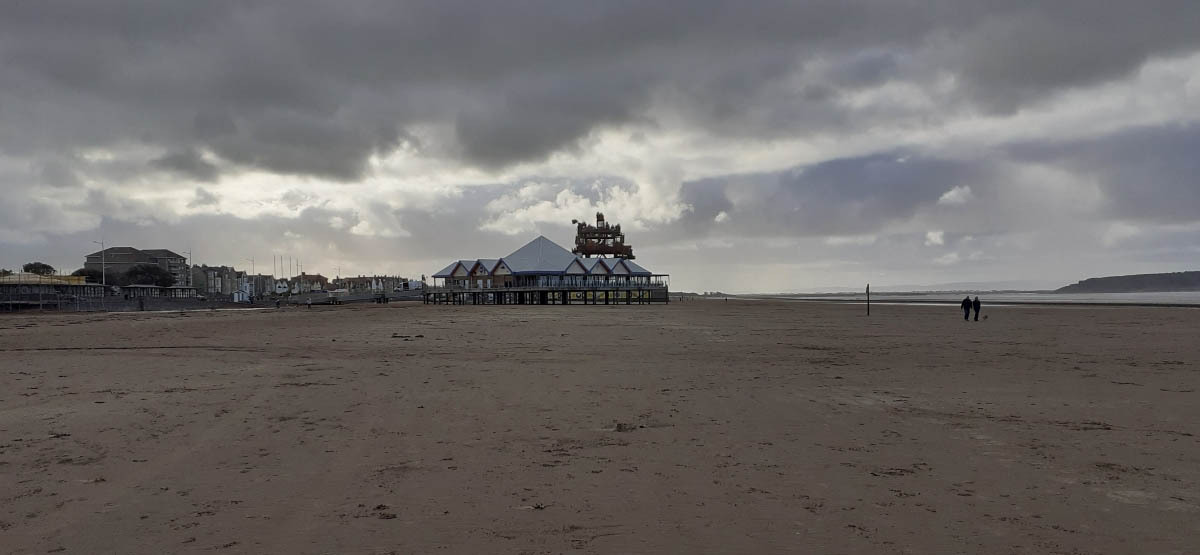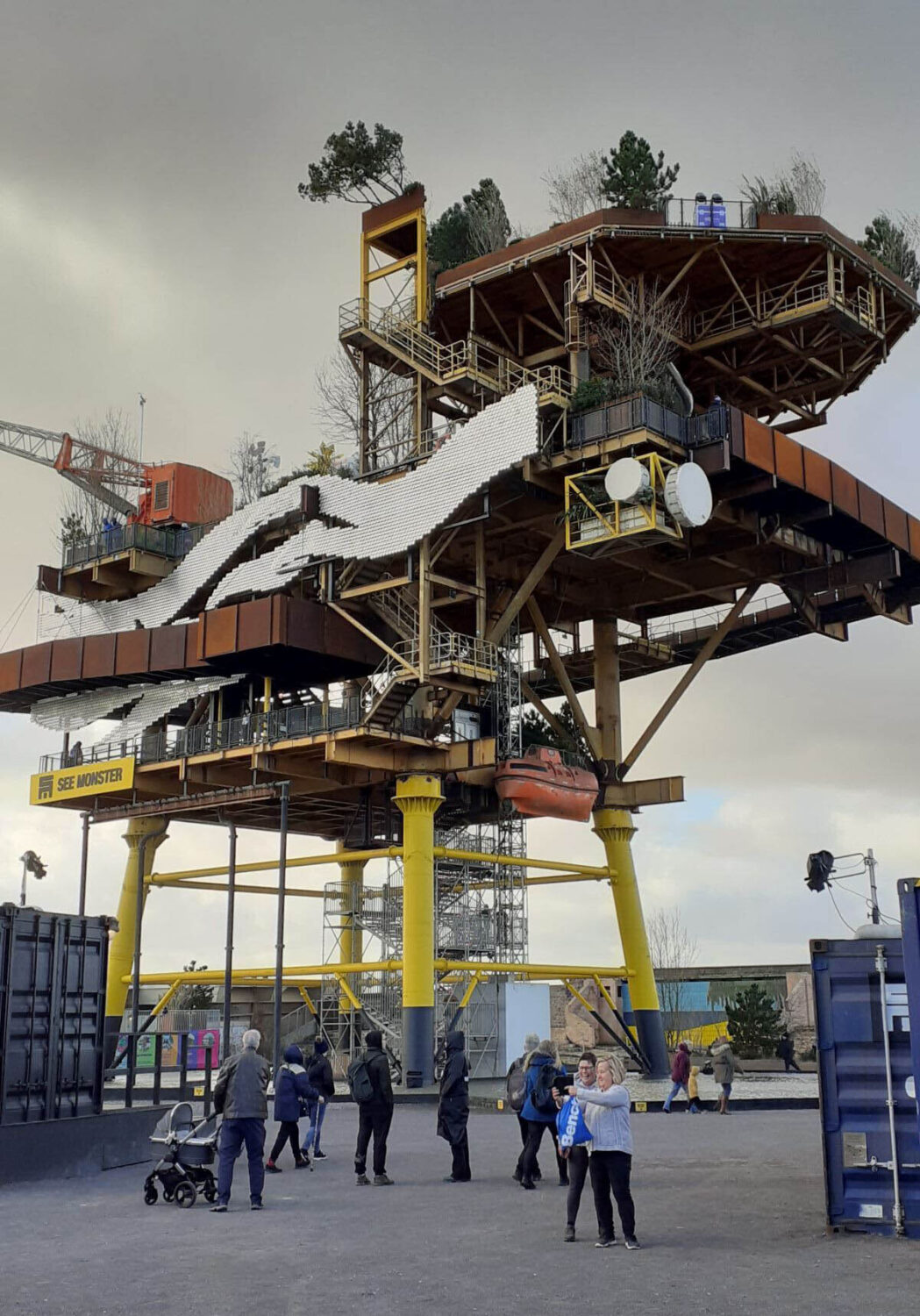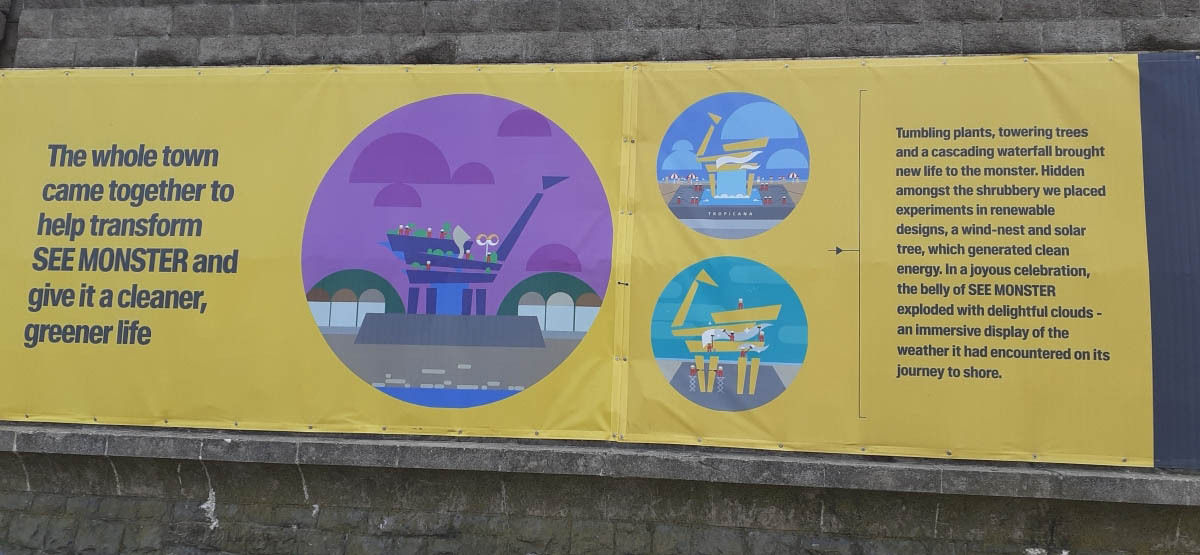
On a cold, dull and windy day I went to Weston to see the monster. At a distance it looked disappointingly small, dwarfed by miles of empty sand and sea, but as I walked along the beach it grew until its full scale was apparent. So, too, was its oddity.
The monster – a repurposed oil rig – is large, though not outsize in the context of the big seaside hotels nearby. It stood, rather sadly I thought, with its feet in a paddling pool inside a partially derelict seaside attraction, the Tropicana Centre. The Tropicana had previously hosted Banksy’s Dismaland and seemed better aligned to that purpose.
The rig had been adapted as “a vivid reminder of our industrial past – and an amazing symbol of our journey towards a sustainable future.” The former was more apparent. Close up, the huge rusting girders and narrow steel walkways were undeniably impressive. The wind-blasted trees struggling in their raised beds were less so. The toytown windmills and the solar panels formed in the shape of a lily were, at best, harmless whimsy.

Every so often a puff of steam emerged from a large iron pipe. According to a poster these were “delightful clouds” representing “an immersive display of the weather it had encountered on its journey to shore.” The real weather gave a real immersive display as gale force winds prevented access to the upper deck.
See Monster, to give its official title, was one of ten projects produced in 2022 as part of Unboxed: “A celebration of creativity across all four nations of the UK”. The programme had been announced by Theresa May at the Conservative Party Conference in 2018 and was blighted from the start by those who claimed it as a ‘Festival of Brexit’. While May clearly intended it to be a celebration of what an independent Britain could do, she had enough political sense not to make the link explicit.

Unboxed was to cost some £120m in total, and, had not other, bigger scandals eclipsed it, would have been a major embarrassment for the government. It attracted very little public attention and failed to get close to its planned visitor numbers. The chair of the Digital, Culture Media and Sport Committee called it ”an unadulterated shambles from the very start” and called for an investigation by the National Audit Office.
As with so much recently, Brexit is largely to blame for the shambles. None of the organisers wanted anything to do with celebrating the most divisive event in recent history. Several made the omission of any link an explicit part of their contract. None of the events, therefore, made any reference to that original idea, and few of those attending would have been able to make a connection with our leaving the EU.
Yet without a focus on Brexit, the series of events lacked any organising principle or purpose. It was billed as a celebration of creativity, but why? Why now? And why in this manner? What has a redundant oil rig to do with growing vegetables in Scotland or an ‘immersive group hallucination’ in Woolwich? In the absence of any clear theme, it seems groups of artists just did their own thing.
None of this seemed to touch those people of Weston-super-Mare who were visiting the installation at the same time as me. It made a focus for a day out. It was something new in a town that, despite considerable civic investment, still had that sad and shabby feel of an out-of-season seaside resort. It brought in business. No-one I spoke to had made a connection with Brexit and no-one wanted to.
Yet if people were pleased to see a bit of investment in their town, there was little evidence that it stimulated profound thoughts about a new and more sustainable future. It was just a curiosity, a pleasant distraction. There seemed no connection between the high-flown rhetoric of its promoters, and the grubby reality on the ground.
In that sense it was true to Brexit.





